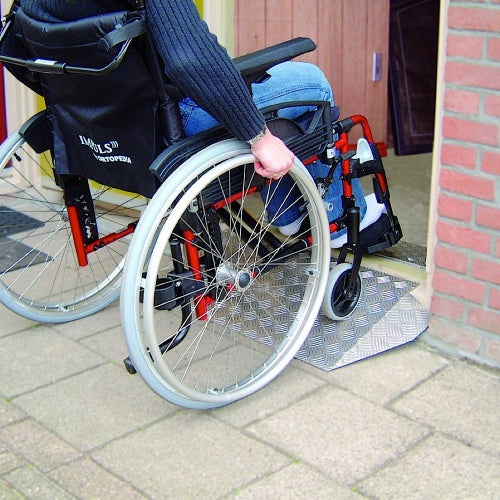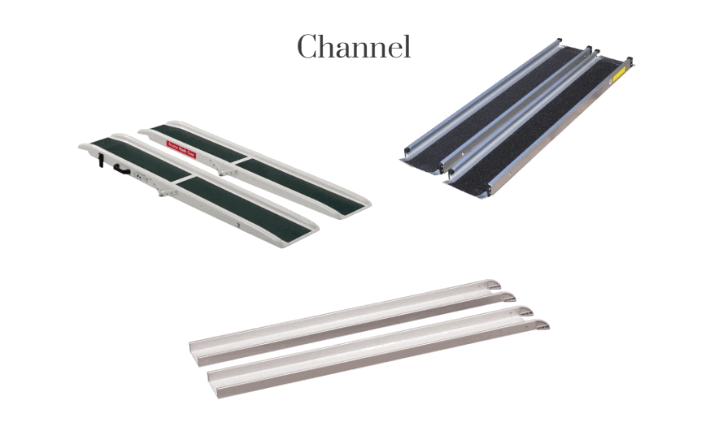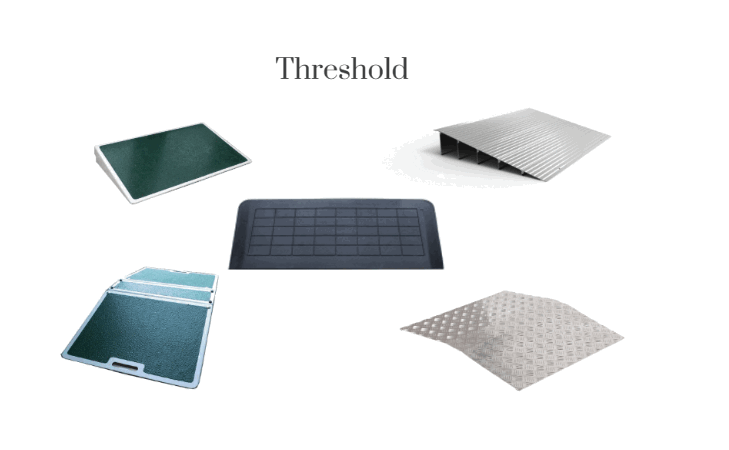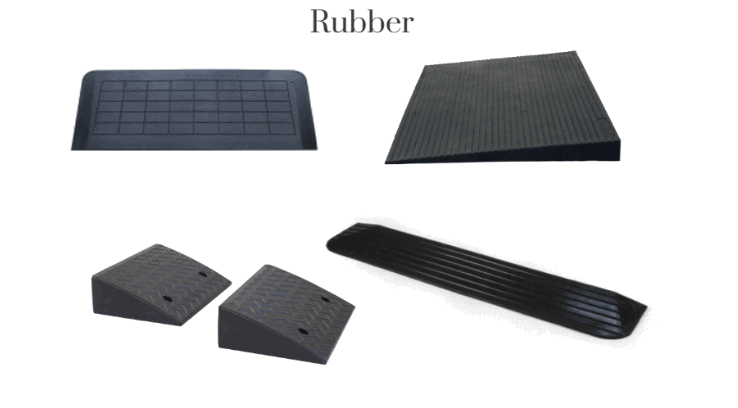Choosing an accessible ramp for mobility aids

This article was updated on 22/04/2024.
Ramps can provide vital access for wheelchair or scooter users to get around their home easily. There are many important factors to consider when choosing the right ramp to suit your needs.
If you have a wheelchair, scooter or moving mobility aid, it’s important to think about the accessibility into and around your home. If you have steps leading up to the house or any raised thresholds between rooms, it’s a good idea to consider getting a ramp to allow easy accessibility for the wheelchair user.
With many different styles of ramps available on the market, you will need to take some important factors into consideration before choosing and make sure the ramp you do choose, does and is everything you need it to be.
You will need to consider the placement of the ramp, if the user will be riding the mobility aid on the ramp or just the mobility aid will be on the ramp, the measurements of where the ramp needs to go, if it needs to be portable and which material will be best suited to you.
The ADA recommends the following guidelines for wheelchair/scooter ramp slopes:
- If you will ride up and down the wheelchair ramp while seated in your wheelchair, you’ll need about 1 foot of ramp for every inch of rise.
- If you will walk alongside or behind your mobility device, and power it up unoccupied, you will need about 1 foot of ramp for every 3 inches of rise.
Different types of accessible ramps
Different styles of ramps include channel, threshold and broad with adjustable and folding variations. They can made from fibreglass (with reinforced plastic), aluminium or solid rubber.
Channel ramps tend to be portable and consist of two slim parallel ramps which allow access over curbs, steps or into a vehicle. They can also come in telescopic and folding styles and are often made from metal or fibreglass with rubber grips underneath to keep in place.

Threshold ramps are smaller than channel ramps and consist of one broad piece. They are normally used in a permanent state over the threshold of a doorway or room which is used often, but you can find styles that are lightweight and fold up easily. Variations can be found in fibreglass, metal and rubber depending on what you prefer. They are also lower in height increments than other ramps as they are designed for doorway and room thresholds rather than steps or vehicles.

Broad ramps are full width ramps without the gap in between like the channel ramps. They simply run straight up and down taking the whole of a wheelchair or scooter, and can also be used as pedestrian ramps. They usually feature side parapets which prevents the mobility aid from coming off the edges of the ramp and can be available in fixed, adjustable or roll-up portable styles.

Aluminium ramps are often incredibly lightweight in portable and adjustable designs. Probably the most common style of ramp and usually have a a check plate or ribbed surface to ensure better grip and friction between wheels and ramp helping them to stop slipping when wet. The most varied in style in narrow, broad, width and length adjustable styles, threshold, channel and suitcase.

Fibreglass ramps are made with reinforced plastic making them robust and non-corrosive. They are easy to manage as there are styles that fold away for portability and re-use and are usually available in threshold, channel and broad styles.

Rubber ramps are solid and durable, can often feel heavy so are often used as a permanently placed ramp. As rubber ramps don’t ‘hover’ above ground like aluminium and fibreglass styles, as the height is thick rubber, they can be used to take heavier weights and are unmovable without force. The castellated surfaces prevent slips and they can even be cut down to the desired size.

This guide simply shows you the options along with how to work out the measurements, if you are unable to fit the ramp yourself, always seek professional help as they will be able to install the ramp safely and securely if you are having it placed permanently.
Kate Makin, OT

Kate Makin qualified as an occupational therapist (OT) in 2001 with a BSc (Hons) in Occupational Therapy. She is a member of the Royal College of Occupational Therapists (RCOT).
As a registered occupational therapist (OT), Kate is a science degree-based, health and social care professional, taking a “whole person” approach to both physical and mental health and wellbeing. This enables individuals, of all ages, to achieve their full potential and lead as independent life as possible.
Click here for Kate’s registration with the Health and Care Professions Council.
Throughout her career, Kate has worked in many different clinical settings, in both the public and private sector. Kate has been running her own independent occupational therapist business since 2009. She is passionate about disability aids and adaptations, with a specialist interest in postural management and seating.
As Ability Superstore’s resident OT, Kate is on hand to offer professional advice and answer any queries.